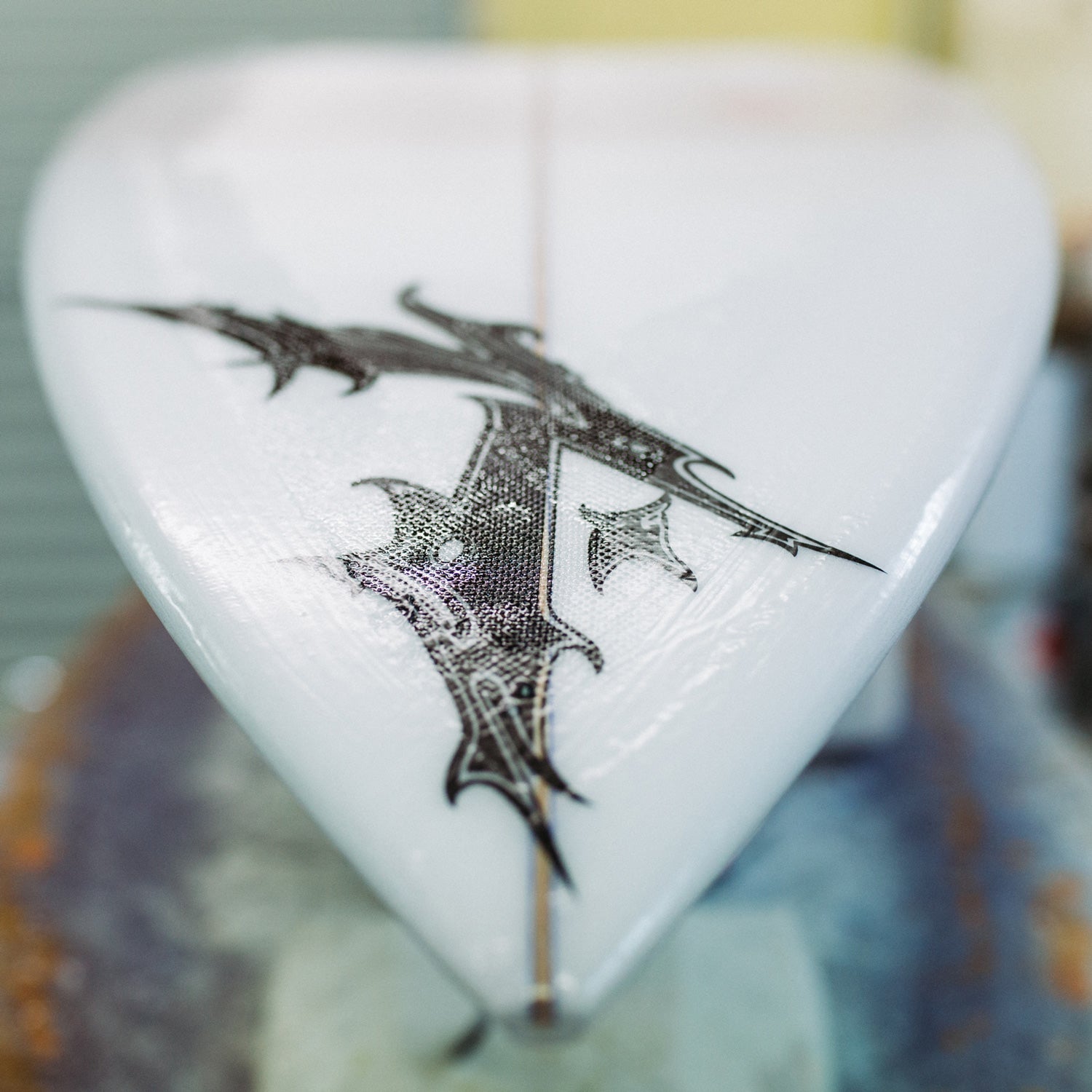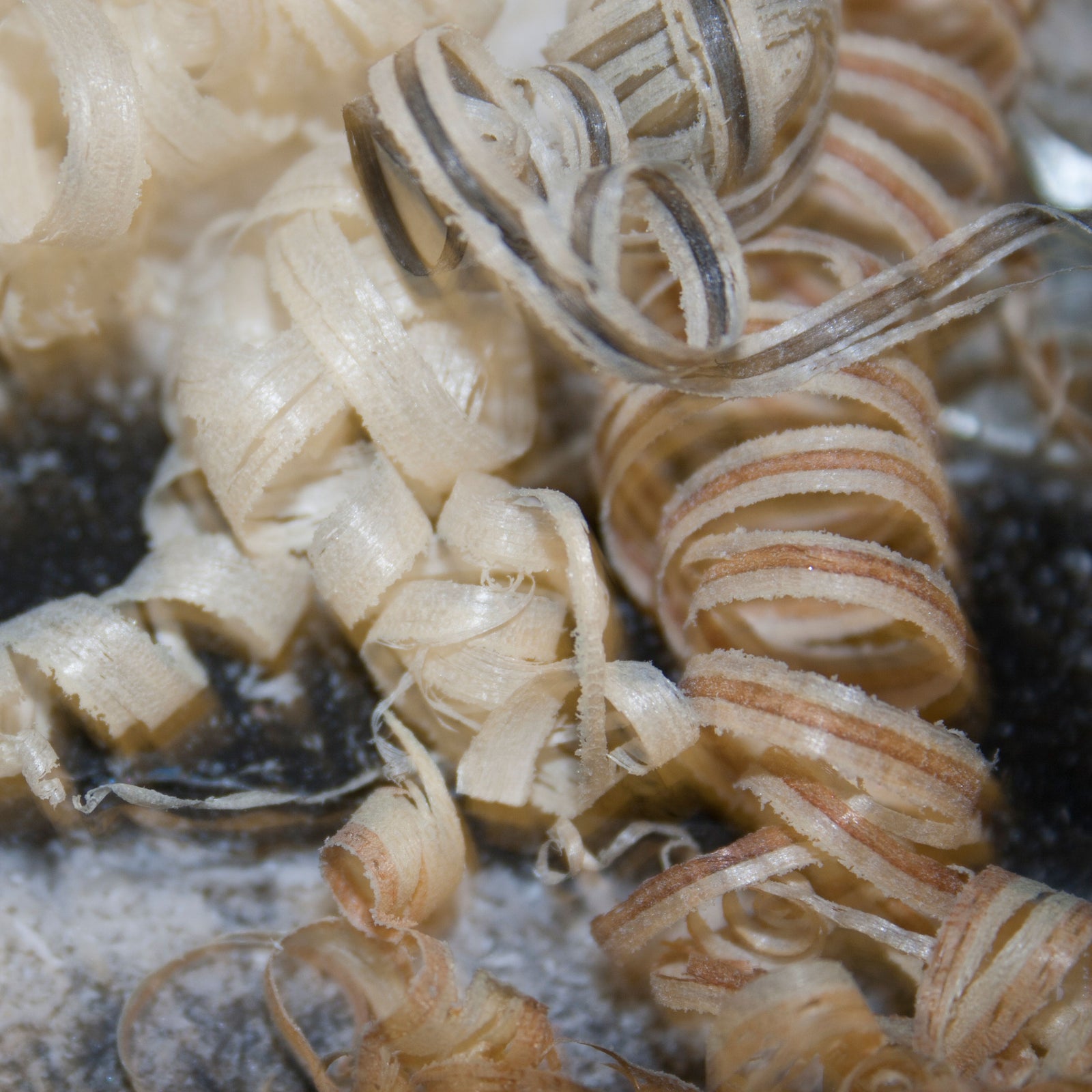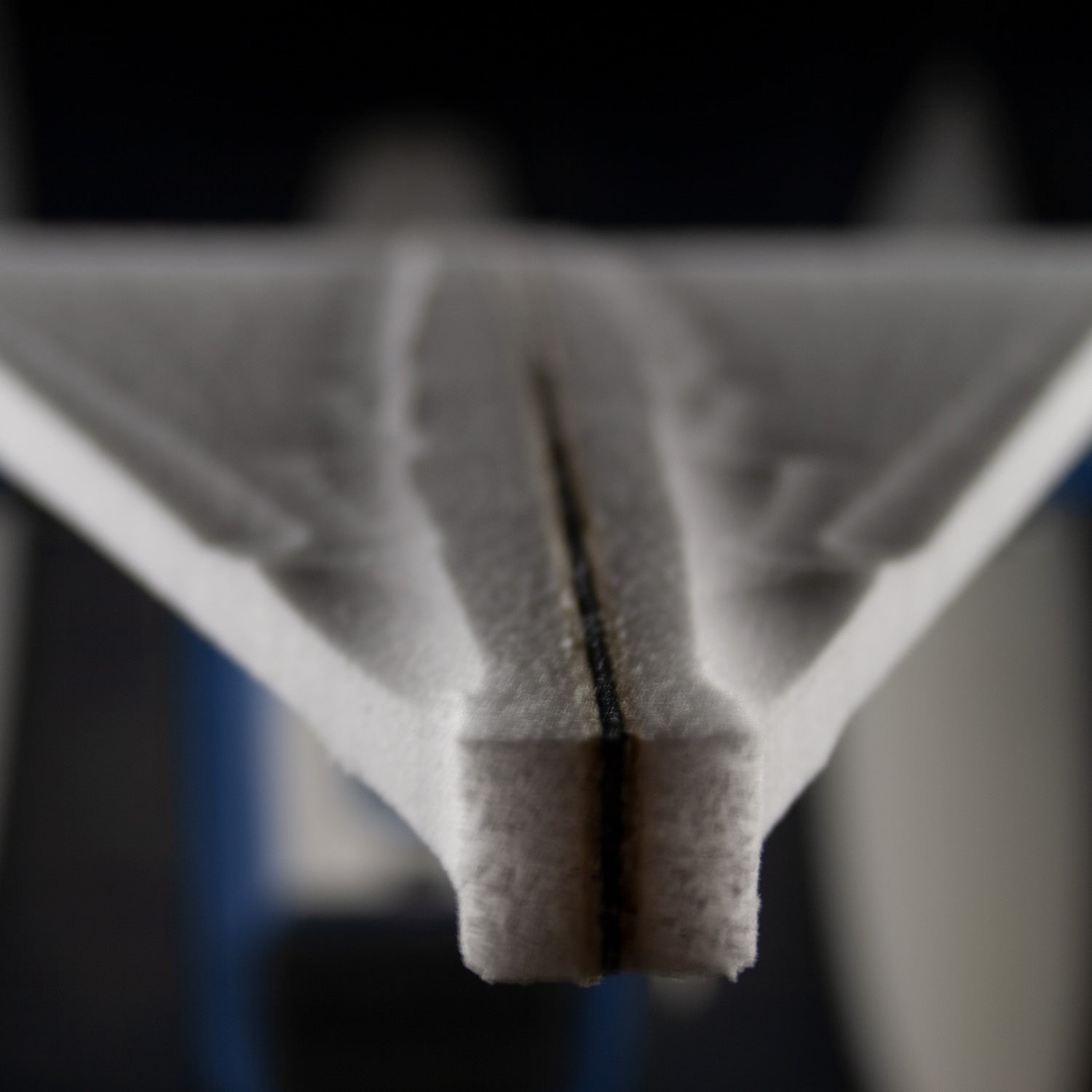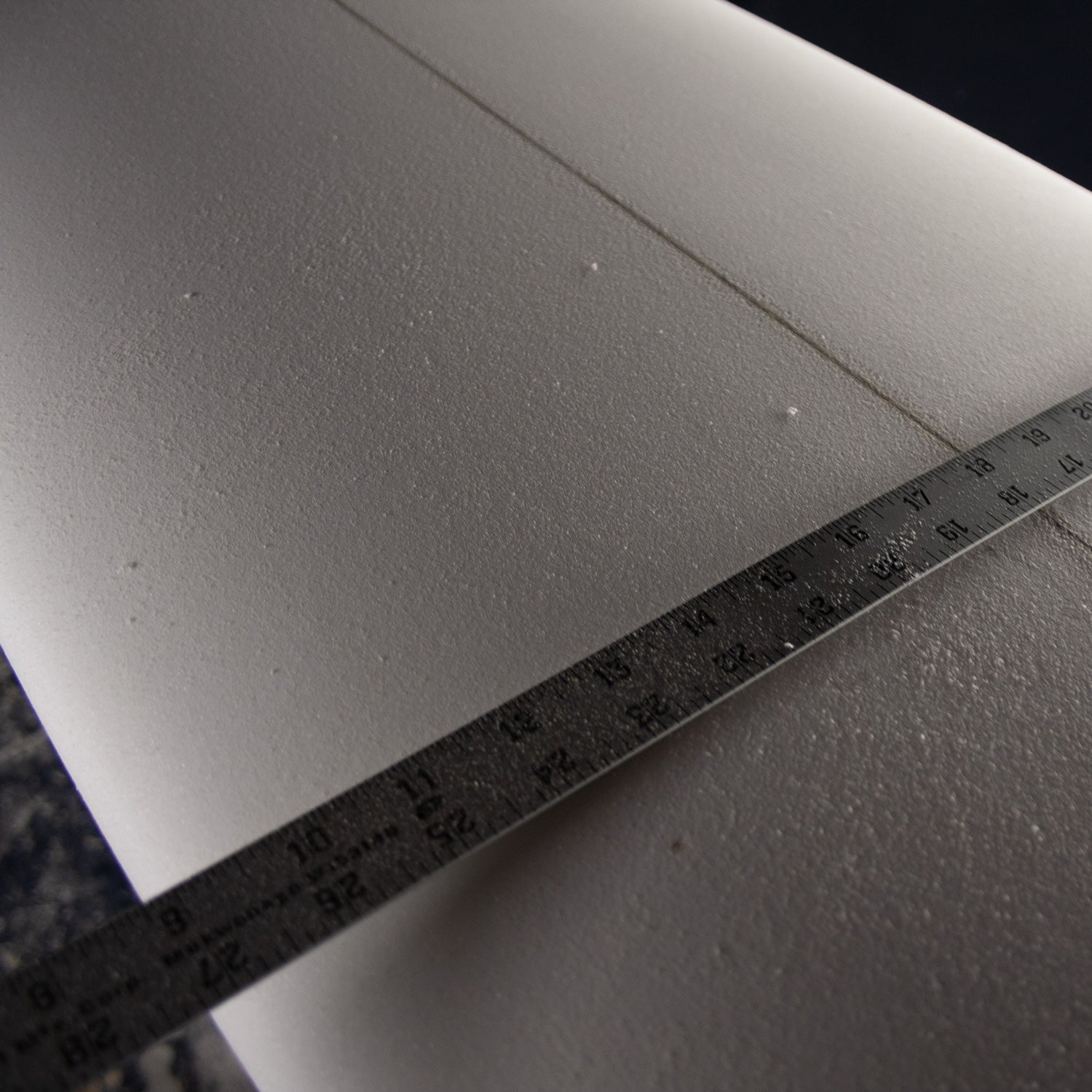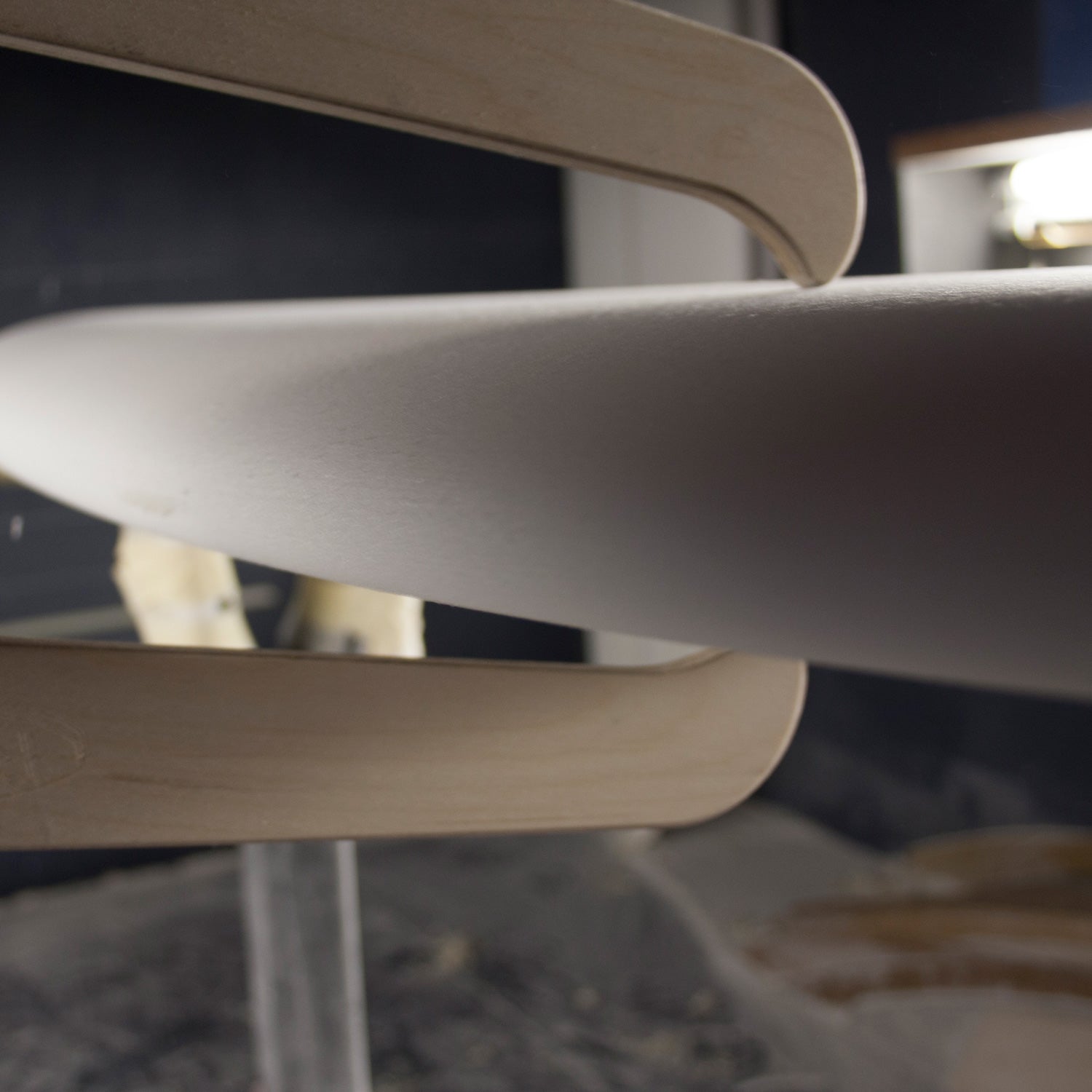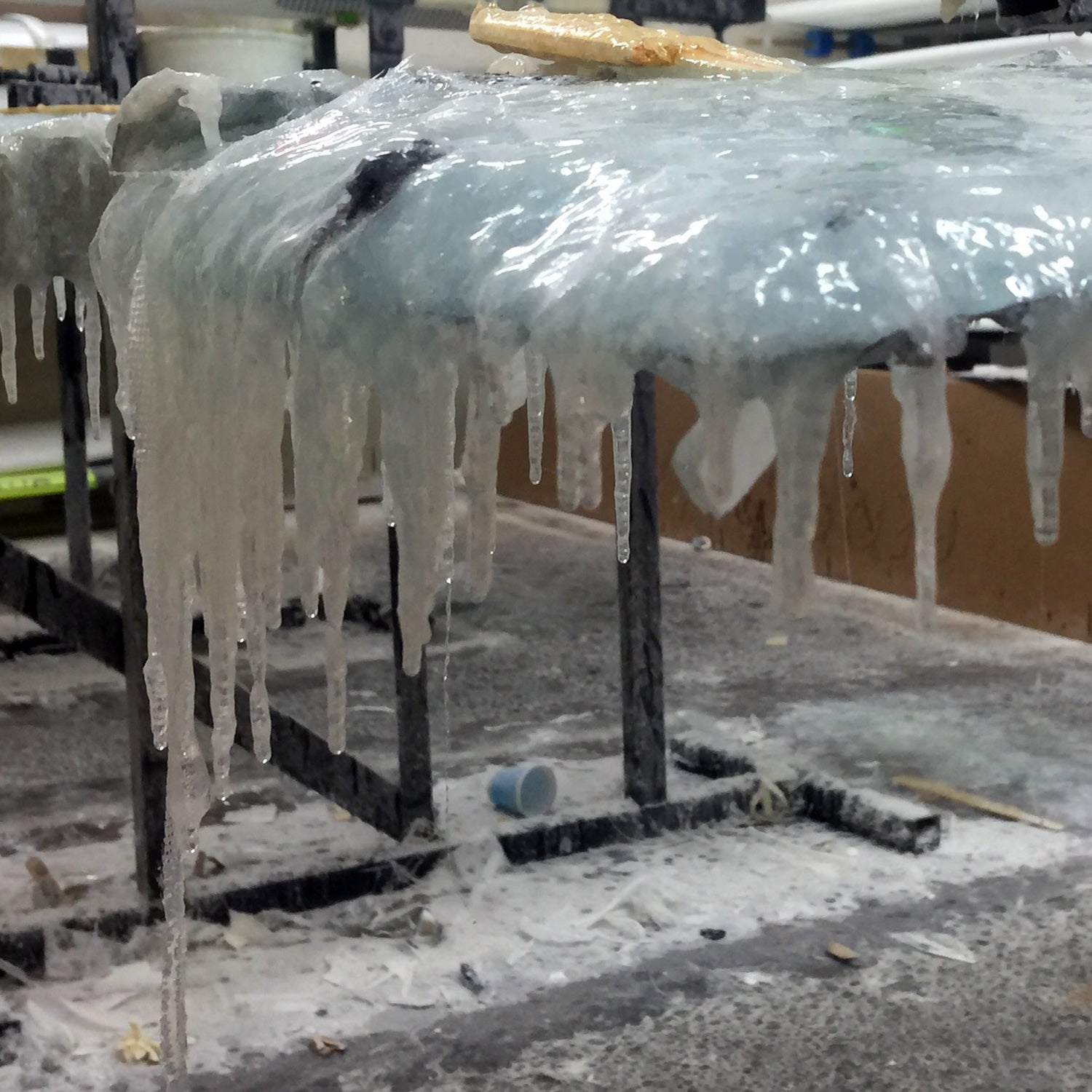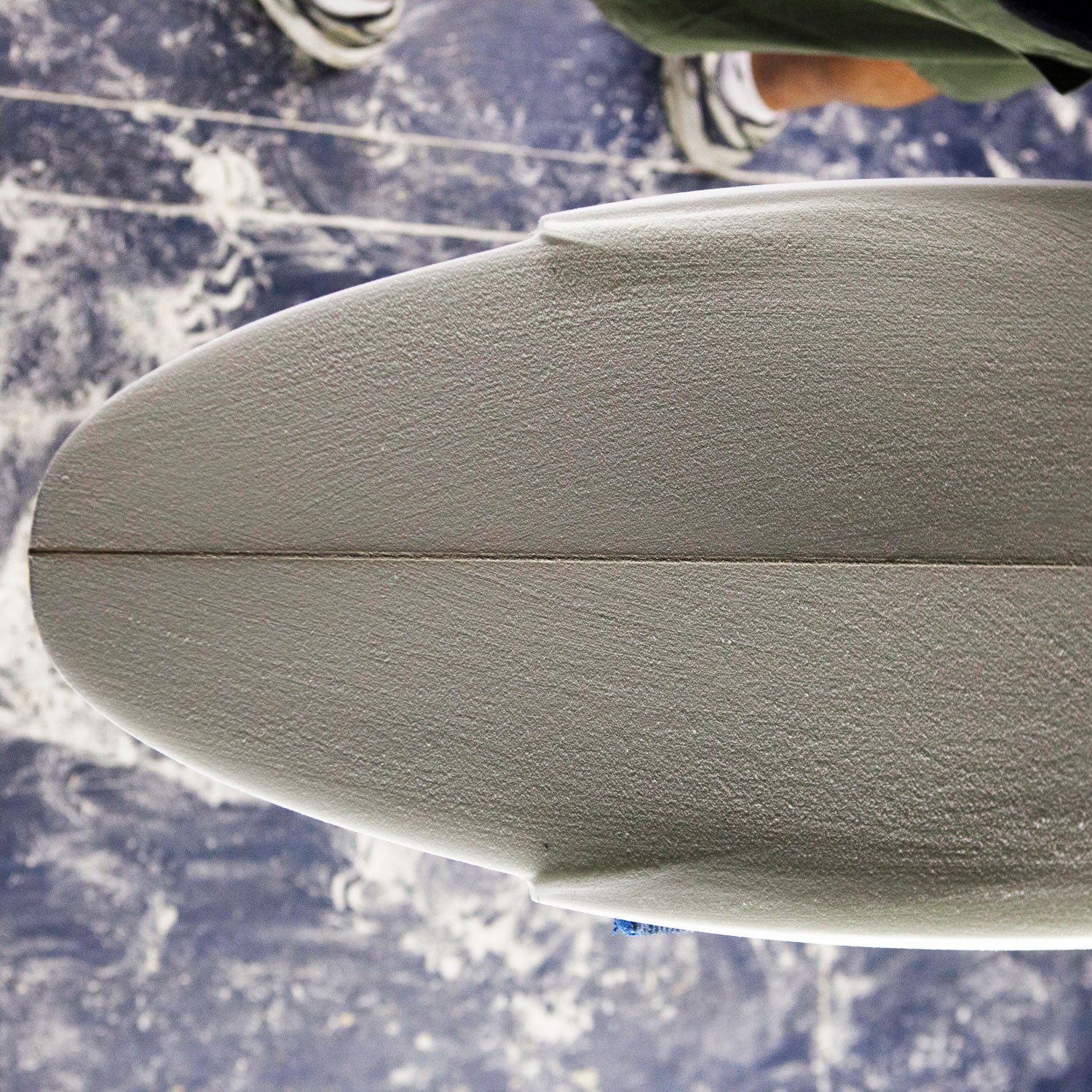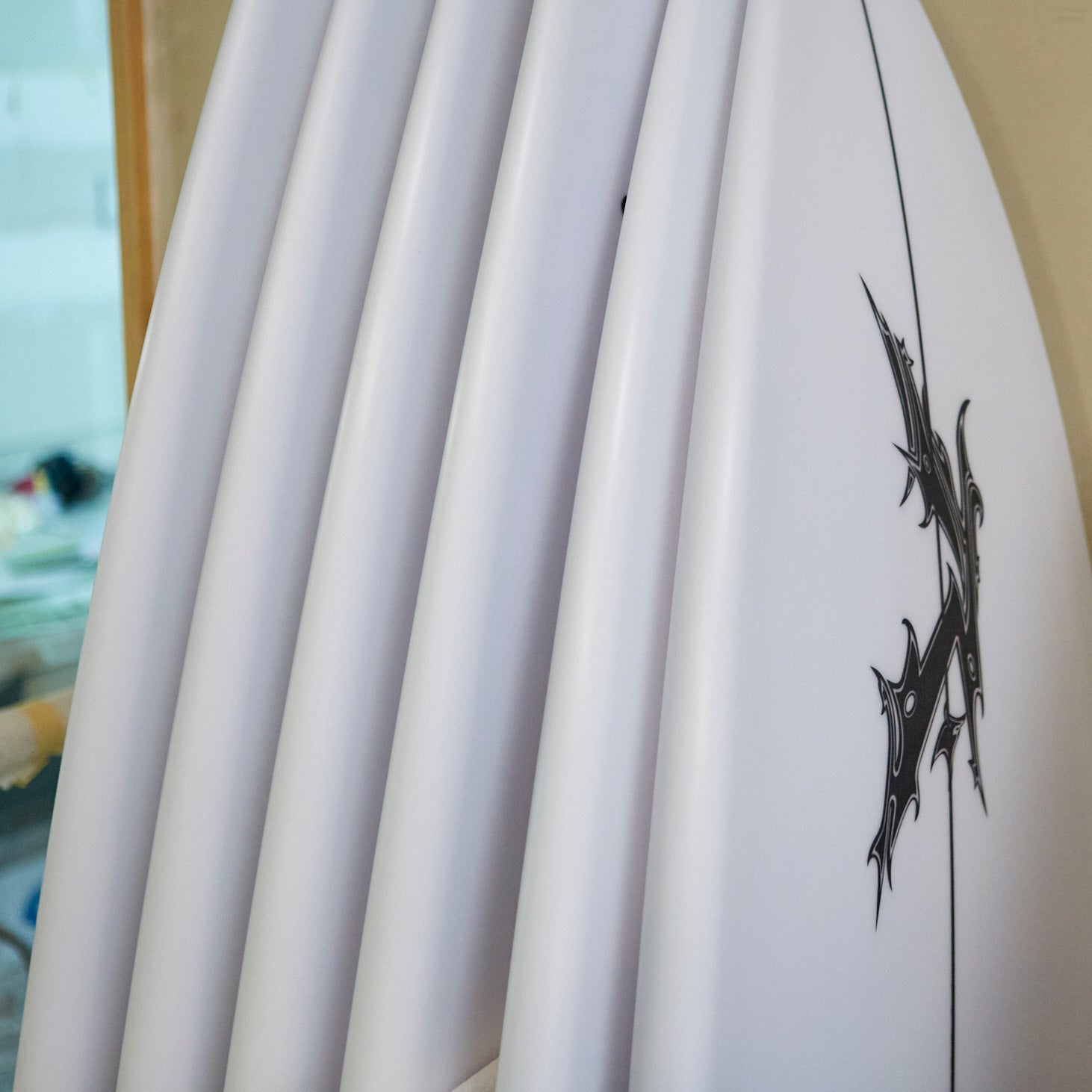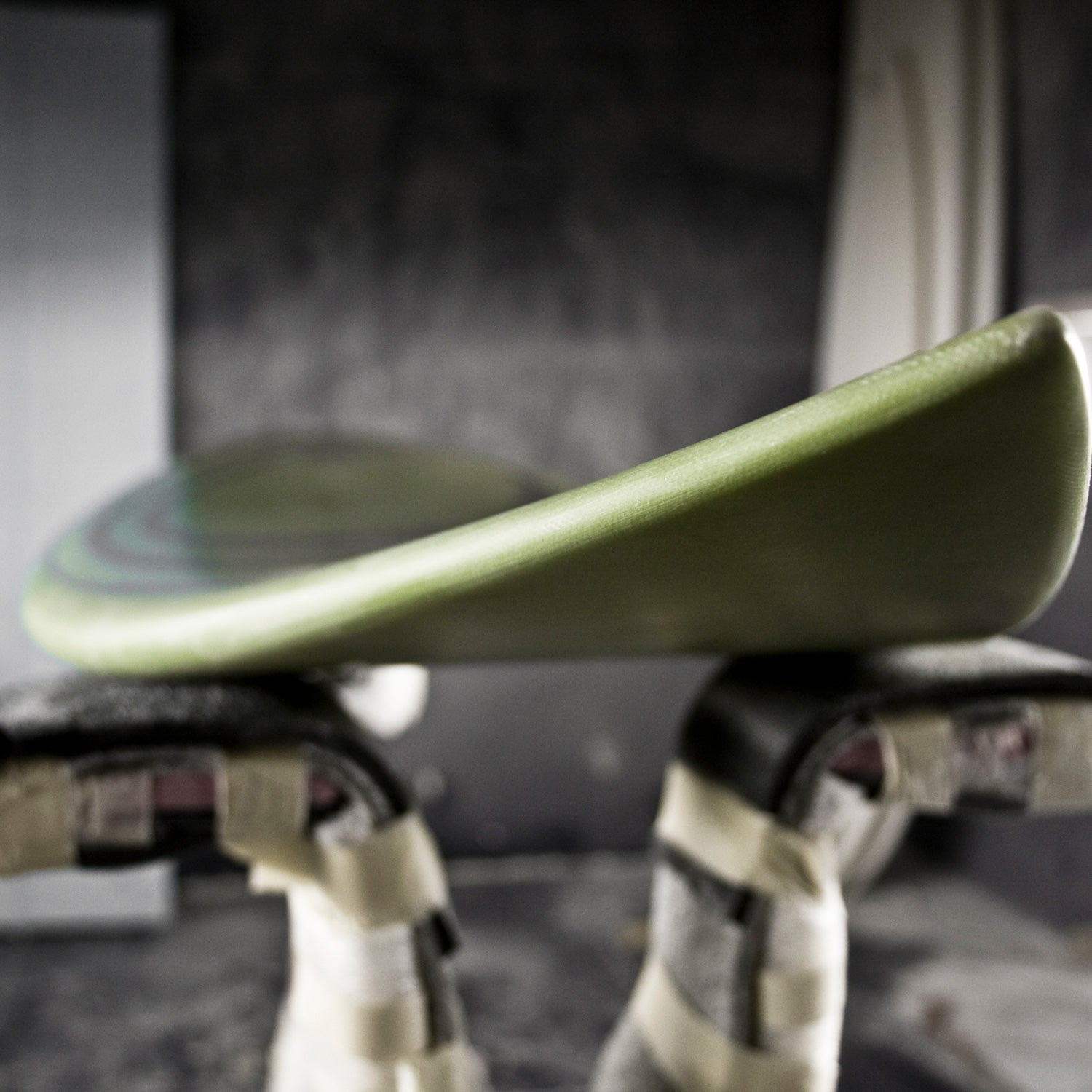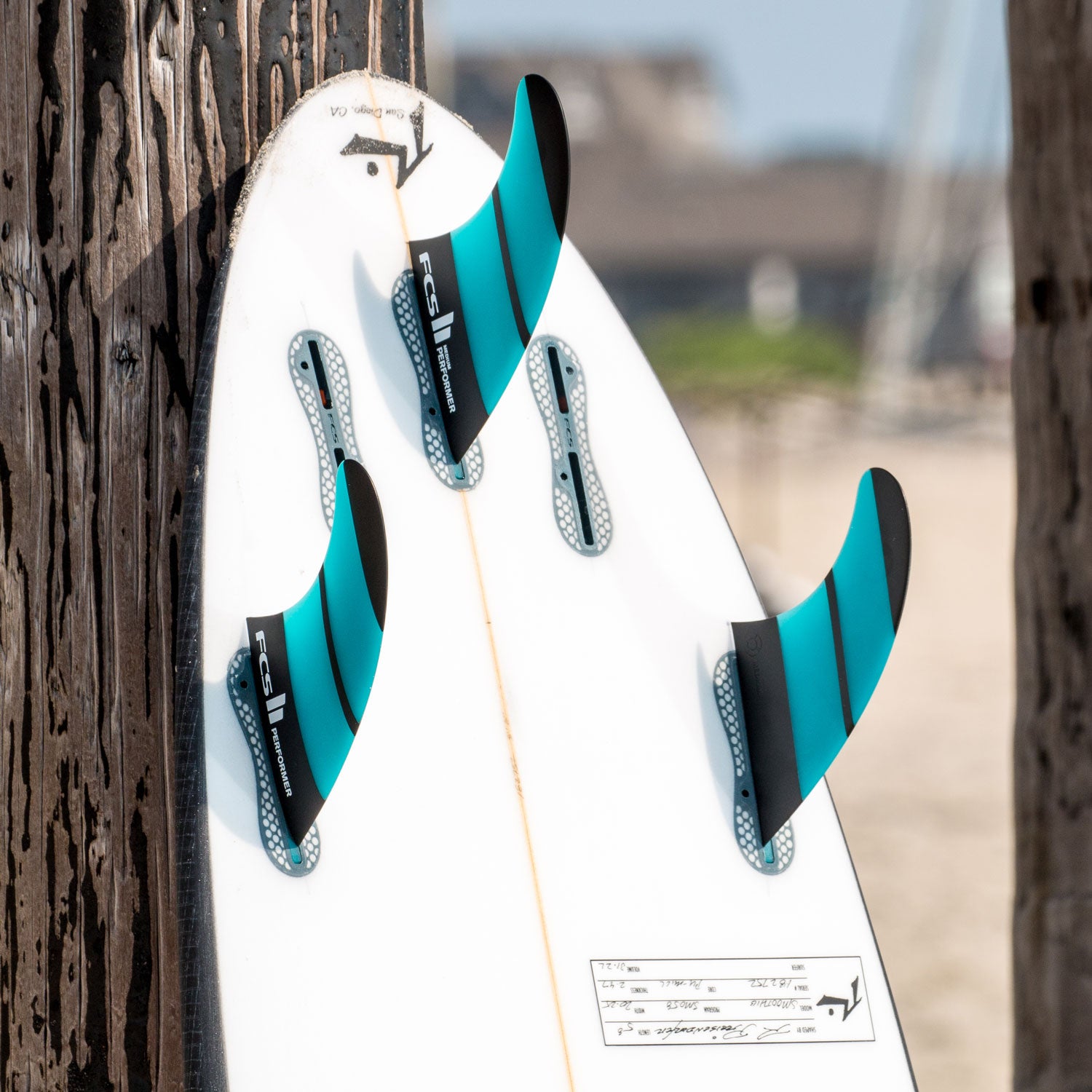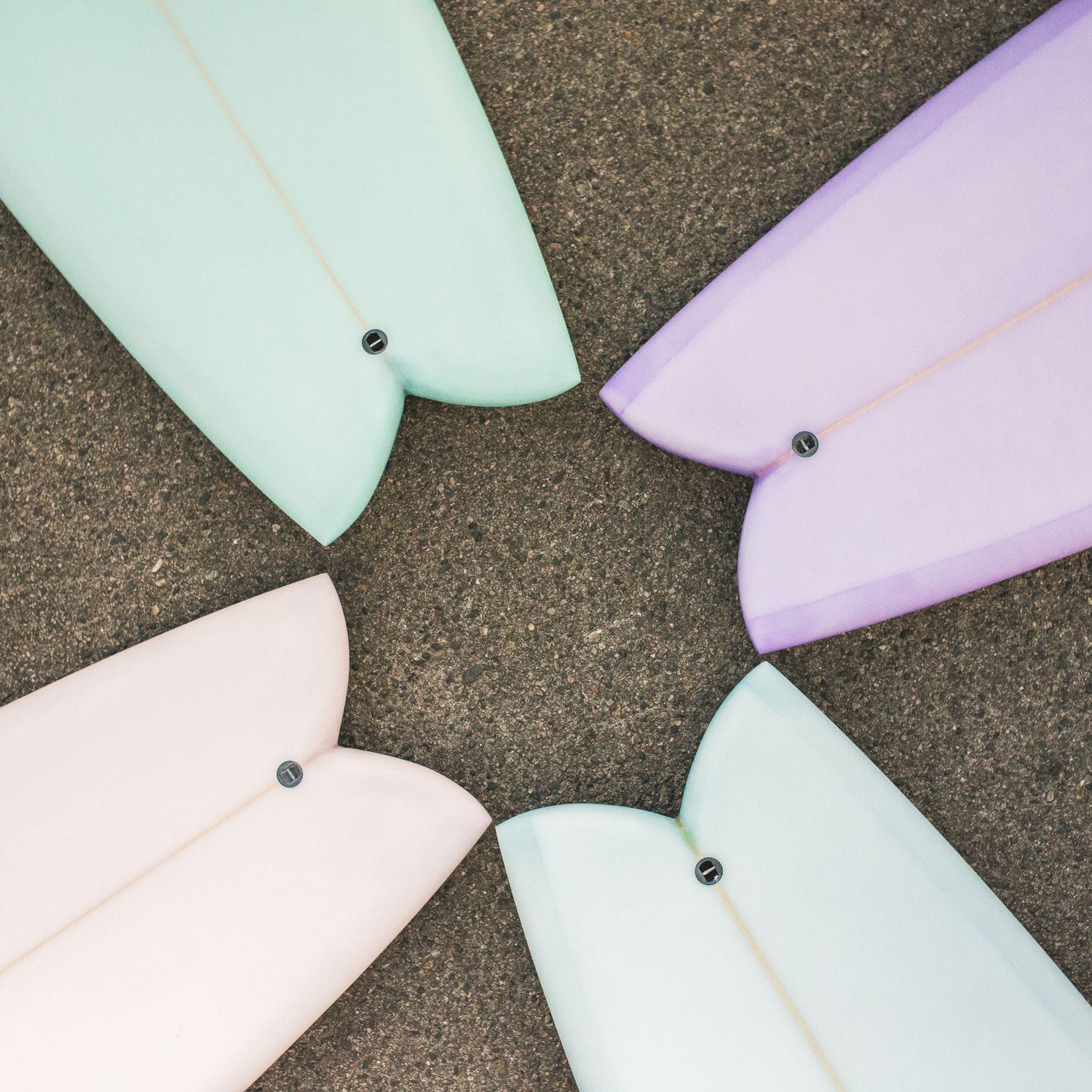This area at the top of the board (measured at a point twelve inches down from the tip) is more important than most people think. A thinner nose is almost always associated with a higher-performance surfboard geared toward larger waves and is accentuated with greater rocker. A wider nose can be found on beginner and small wave boards as its greater surface area on the bottom captures and channels more water through the wide point and tail of the surfboard. More foam usually means greater stability, but with the sacrifice of a bit less maneuverability.
This is that strip of wood you see running down the middle of your surfboard. It provides strength and a center for “flex” in your board. Often times the stringer is made out of balsa wood, but other stronger woods and materials may be used as substitution. Some boards, usually for bigger waves, are equipped with more than one stringer for extra strength. New, alternative surfboards like Surftech, Salomon and Aviso do not have wooden stringers and rely, rather, on the strength and flex of the materials they’re built with. Other stringer designs are being used as well, for example, the parabolic stringer does not feature a stringer running down the center of the board, but rather two on the rails to create a unique liveliness and flex for an unparalleled surfing experience.
Foil is how areas of thickness correlate with other areas of thickness from nose to tail, deck to bottom and vice versa. Essentially, good foil is an even distribution of thickness as the nose fades into the wide-point and then into the tail. Imagine trying to turn a board to go down the line that has a brick attached to the nose or the tail—the “swing” will be off balance. Good foil translates into good flow as the board moves from points on the nose to the middle and to the tail throughout the duration of a ride. Foil can also be used to describe some fin designs. Foil in the fin holds the same concept as it does on a surfboard. The thickness must be balanced throughout or the fin will not do what it is made to do—it will be too stiff or too flexy, or it won’t channel water smoothly.
A wide point is the widest area across a surfboard and it is not always located in the center. Wide points vary and often “forward” wide points (pushed toward nose) aid front-footed surfing and “pulled-back” wide points (pushed toward tail) aid back-footed surfing. Generally, the wider the board is the more stable it is and the more suited it is for smaller surf and vice versa.
To find the wide point on a surfboard simply take a ruler or measuring tape and stretch it across the deck, slide the ruler down perpendicular to the stringer until you find the area of the board that has the greatest width across.
Thickness is a very important feature that everyone-from beginner to experienced-needs to be aware of. It will determine in many ways how the other design features of your board will work. The thicker the board the more stable and buoyant it will be-obviously this is important for a beginner. But more technically, thickness can change in a surfboard’s template in countless different areas, all of which directly relate to stability and responsiveness.
Fiberglass cloth along with resin (the hardener) is the shell on your traditional board or your Surftech. In both instances fiberglass is used along with as the structural strengthener of that shell. On a polyurethane shortboard, the accepted choice of cloth “weight” is a 4 and 6 ounce combo on the deck with a 4 ounce bottom. Longboards are heavier; usually with 4/6 ounce decks and 6 ounce bottoms. There are two widely used types of fiberglass for the traditional polyurethane surfboard. “E” cloth is the most commonly used of the two. “S” glass is stronger but more expensive. You can use a combination of the two if you choose, but this is a custom touch and you must request it. Check out surftech.com, salomonscore.com and avisosurf.com for a closer look at what goes into the “shell” of their alternative designs.
Polyurethane (PU) The closure of Clark foam was a double edged sword. Clark had a formula that was designed for close tolerance blanks. The outer shell was the hardest foam, and the density dropped off towards the interior of the blank. OK for hand shaping. Not so good for machine shaping. Over shaping would compromise the durability of the core. Today there are several PU foams available that are an improvement over the foam most of us used almost exclusively for decades. Lighter, tighter, whiter, and fairly even density into the core.
Expanded Poly Styrene (EPS) Also known as bead foam Eps material has been around since the 50′s. Eps for surfboards came from large blocks of partially fused beads, primarily used for insulation and packaging. The blocks of foam were something on the order of 3 by 4 by 12. Blanks were cut from the big blocks with a hot wire. EPS must be glassed with epoxy. Early epoxies got a bad rap for being highly toxic if not handled right. They were also not very clear and tended to be more on the yellow or light brown side of things. In the early 80′s a handful of board builders revisited eps. The foam hadn't really changed much. There was a lot of interest in EPS/Epoxy construction for sailboards. The strength to weight advantages were obvious in these larger watercraft. It became the go to construction for most of the custom sailboard builders. This know-how trickled into the surfboard world. There were a few new epoxies available that were formulated to work for board builders. These proved to be a little more user-friendly and yellowed a little less that the boat resins that were used on early Styrofoam boards. Foam with larger (approx 4mm in dia) bead size was still hard to work with and the fusion between the beads was marginal. The ASP (now WSL) tour actually had an event in 1985 that was held in a wave pool in Allentown, Pa. Tom Carroll won the event. Quite a few pros ordered up lightweight epoxy boards for this fresh water event. Now we are using surfboard specific eps foam. It is highly fused and has a much smaller bead size than the foams that were experimented with by earlier generations of board builders.
Basically, there are two types of rails: 50/50 rails (which derive from older, pre-shortboard design styles and are found more on longboards) and “down-turned” rails, which can be found on almost all modern surfboards. A 50/50 rail is shaped the way it sounds, meaning the apex, or mid-point, of the curve is in the middle of the rail, creating an egg-like shape that sits high on the water’s surface. Because this type of rail lacks a sharp edge on the bottom, water can more freely flow out from the bottom of the board as you plane down the face of the wave. This buoyancy and a lack of edge make a board with rounder (50/50) rails much harder to maneuver. A “down-turned” rail is probably what you are used to seeing, as it is the popular choice on most any surfboard today. It begins, essentially, as a 50/50 rail from the nose then at about three-quarters down the rail develops a sharper lower edge to accommodate the flat bottom of the tail area. This sharp edge holds through into the tail and helps to capture the flow of water from the nose and keep it underneath the board so that it creates lift as it runs against the fins in a tighter manner. Down-turned rails are so popular because of the extra maneuverability they give a surfboard. They’re stable yet necessary for vertical, modern surfing.
Describes the overall curve of the surfboard from nose to tail. On a modern surfboard, rocker can be broken down into two different sections: rail (which includes nose and tail curvature) and center (curvature of the middle of the board). Increased nose rocker is usually attributed to boards shaped for bigger-wave surfing. More rocker in the nose allows for a shape that will not “pearl” or plunge into a large, steep wave face when you dropping in. Increased tail rocker can be found in boards shaped for optimal maneuverability. A tail that bends off of the water’s surface provides more lift and sensitivity in the tail for driving through radical turns. Generally speaking, on your standard surfboard, less overall center rocker means the board will glide and paddle better and be more suitable for beginners. More rocker will accommodate intermediate and experienced surfers looking to use every area of the board in order to generate speed and turning power. Aggressive surfers may seek more rocker in their bigger wave boards because the curvature of the nose allows for late drops on consequential waves. Read more about Rocker from Rusty himself.
Single- A board that has one larger fin is usually meant for long, down the line waves and for flowing from rail to rail.
Twin- A twin fin surfboard has two fins positioned a bit closer to the rail, resulting in a quicker, looser, faster turning board.
Thruster- Three fins create more drive and stability, offering the ability to redirect on a dime.
Quad- Instead of having a center fin there are two fins positioned on each side of the stringer, giving these boards a lot more speed without sacrificing much control.
Five fin- The boards equipped with five fin boxes gives the surfer the option to ride the board perfectly as a thruster or a quad for a very versatile surfing experience.
Like the fins, tail design is a highly argued yet innovation friendly aspect of a surfboard. To name all of the tail shapes that have passed before us since surfboard shaping went full throttle more than forty years ago would be exhausting. There are a few, however, that have come and stayed and will always remain.
- Squaretail
- Swallowtail
- Squashtail
- Thumbtail
- Rounded Pintail
- Pintail
- Battail
- Diamond Tail
- Stealth Tail
